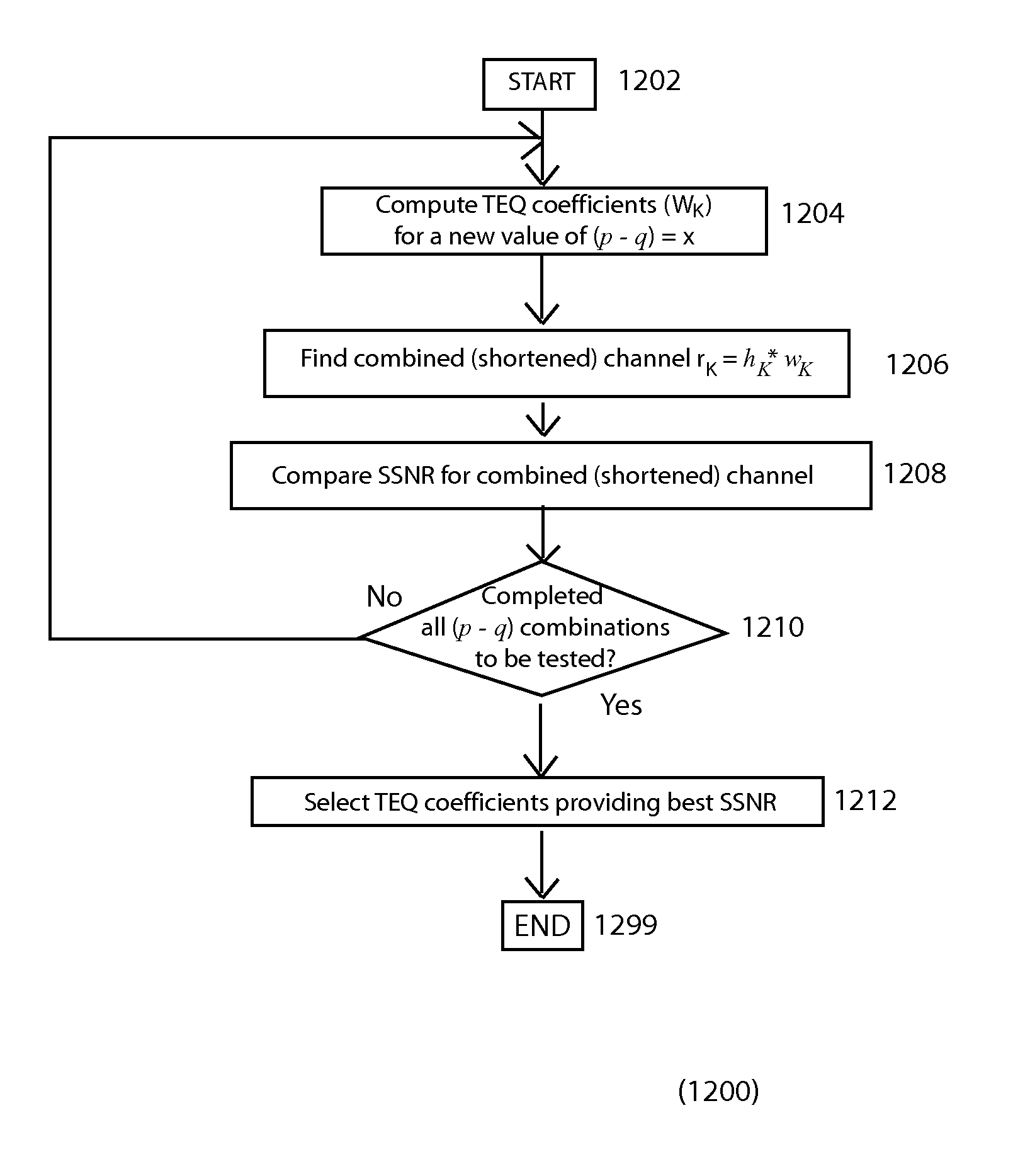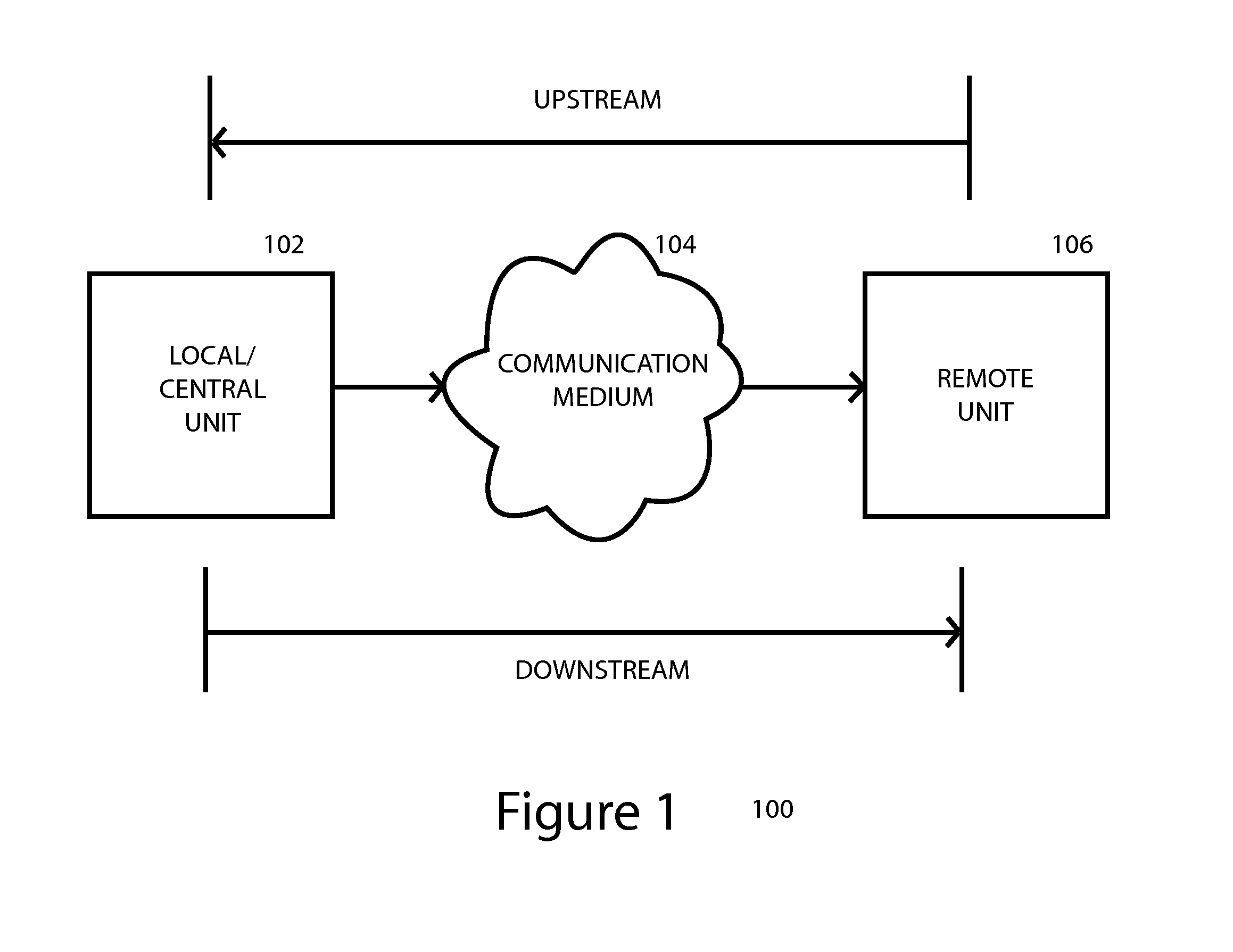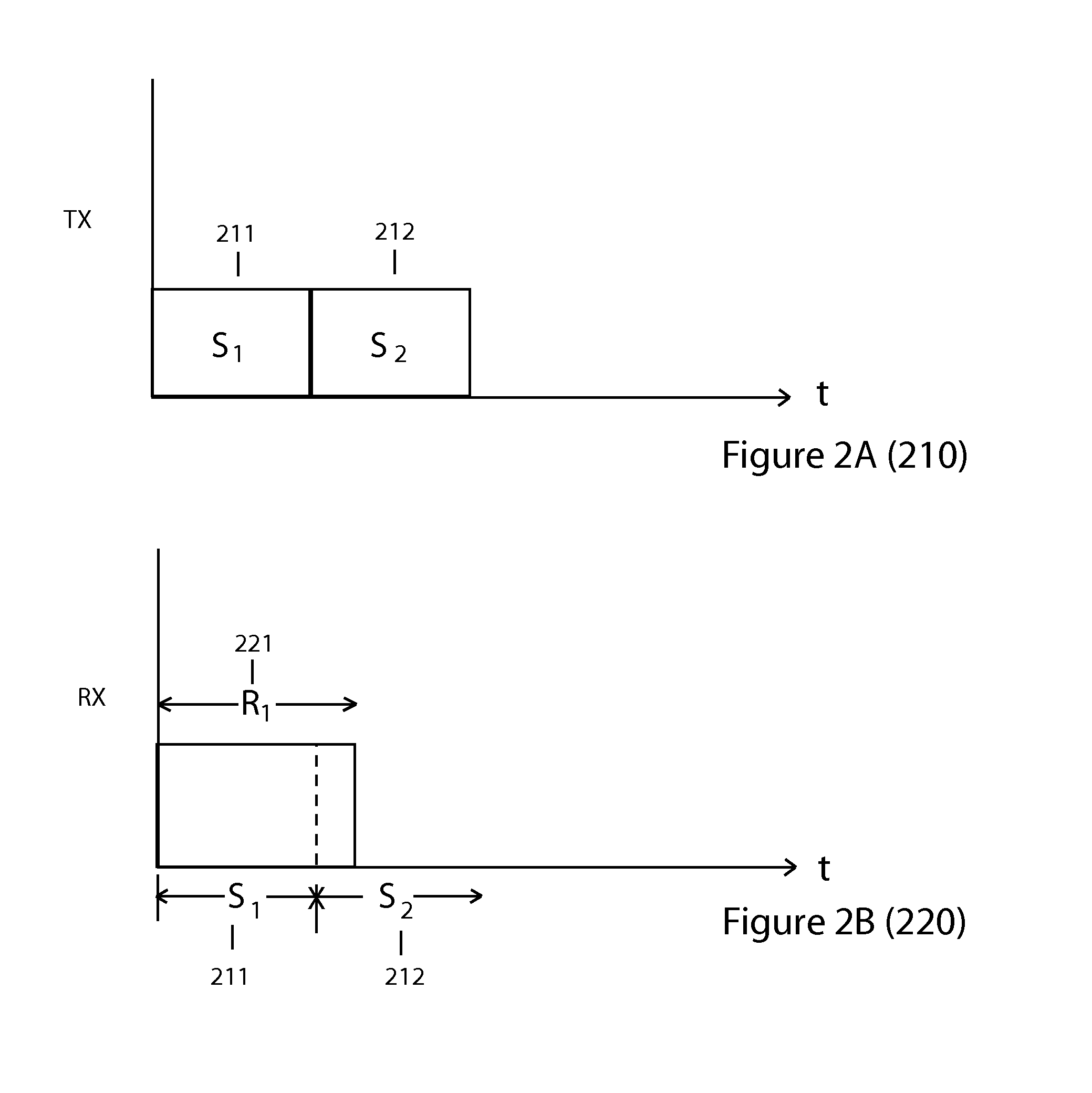System, device, and method for time-domain equalizer training using a two-pass auto-regressive moving average model
a time-domain equalizer and moving average technology, applied in the field of communication systems, can solve the problems of reducing the efficiency of transmitted signals, detrimenting from employing such inter-symbol delay, and variable distortion of signals carried
- Summary
- Abstract
- Description
- Claims
- Application Information
AI Technical Summary
Benefits of technology
Problems solved by technology
Method used
Image
Examples
Embodiment Construction
[0053]An embodiment of the present invention applies the multichannel Levinson algorithm for auto-regressive moving average (ARMA) modeling of the channel impulse response. A two-pass shortening model is used for obtaining TEQ coefficients for a spread channel, such as the upstream channel of an Asymmetric Digital Subscriber Line (ADSL) system. In this two-pass shortening model, the communication channel is modeled in two passes, first for the original channel, and then to the time-mirrored image of the result from the first pass. The TEQ parameters are obtained by cascading the filter corresponding to the denominator polynomial of the first pass modeling and the filter corresponding to the mirrored image of the denominator polynomial of the second pass modeling. Delay is introduced so that the resulting shortened channel is closer to the optimal range.
[0054]Various TEQ design considerations are discussed herein with reference to an exemplary communication system that is generally k...
PUM
 Login to View More
Login to View More Abstract
Description
Claims
Application Information
 Login to View More
Login to View More - R&D
- Intellectual Property
- Life Sciences
- Materials
- Tech Scout
- Unparalleled Data Quality
- Higher Quality Content
- 60% Fewer Hallucinations
Browse by: Latest US Patents, China's latest patents, Technical Efficacy Thesaurus, Application Domain, Technology Topic, Popular Technical Reports.
© 2025 PatSnap. All rights reserved.Legal|Privacy policy|Modern Slavery Act Transparency Statement|Sitemap|About US| Contact US: help@patsnap.com



